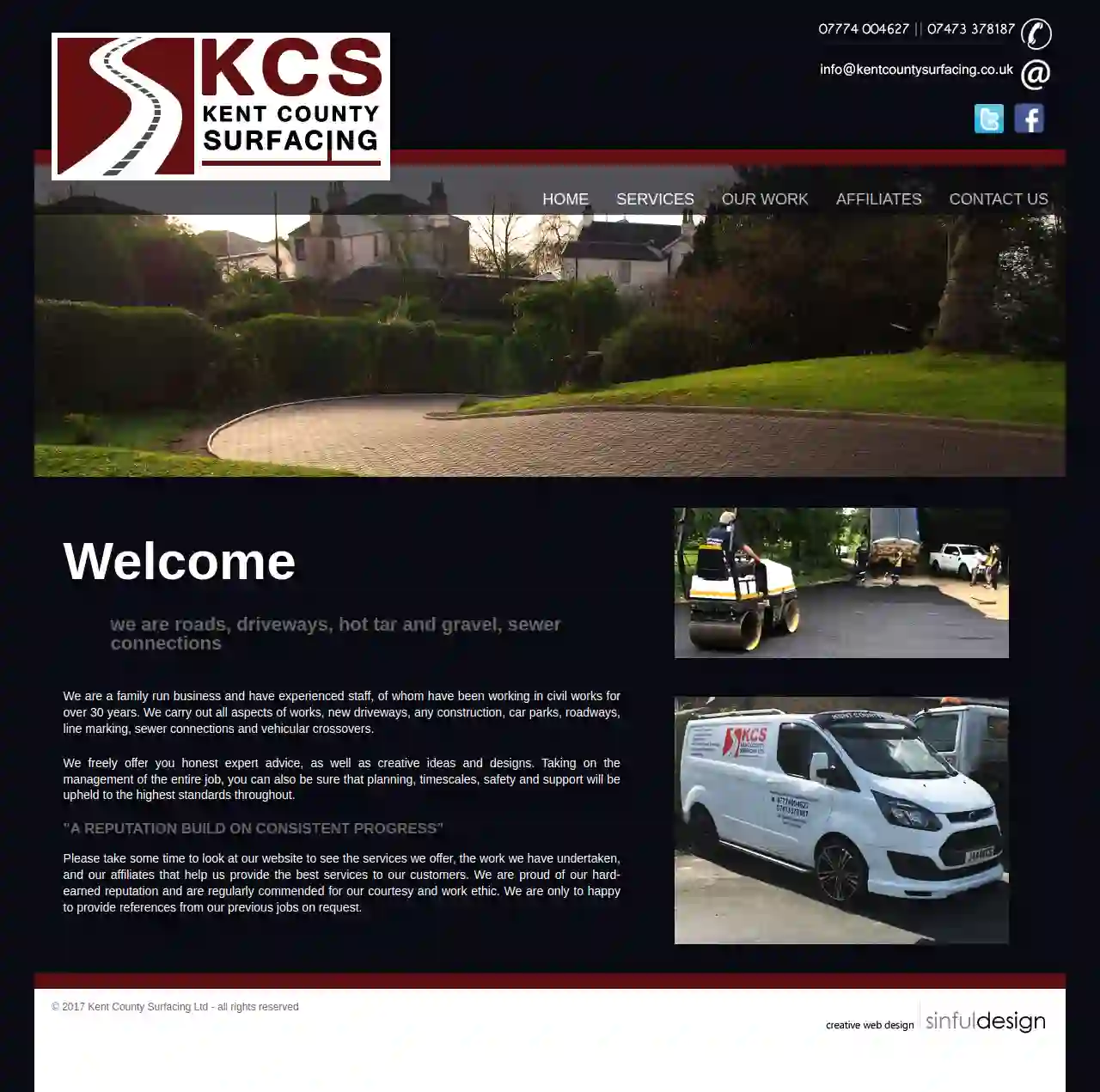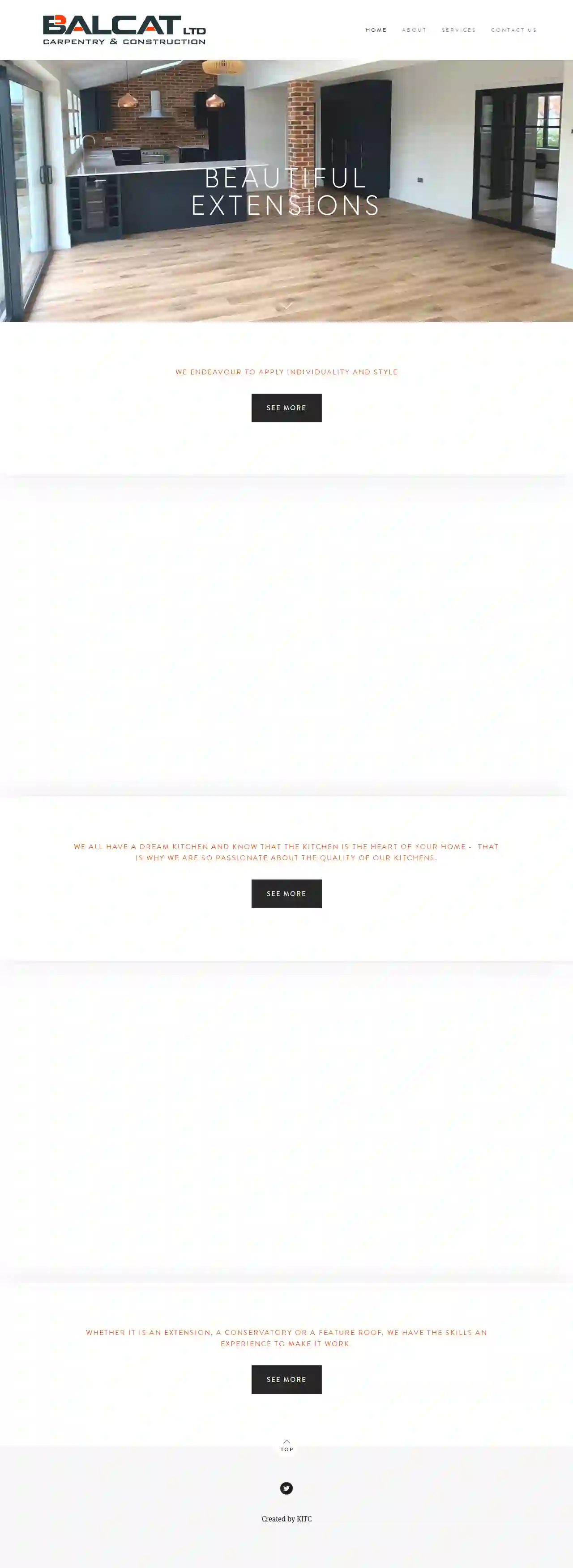Excavation Contractors Whitstable
Top Excavating Contractors in Whitstable
Get multiple Land Excavation quotes for your project today! Compare profiles, reviews, accreditations, portfolio, etc... and choose the best offer.

Oatmor Harris Excavations Ltd
1Deal, GBKent County Surfacing: Your Trusted Partner for Roads, Driveways, and More Kent County Surfacing is a family-run business with a rich history spanning over 30 years. Our experienced team specializes in all aspects of civil works, from new driveways and construction projects to car parks, roadways, and sewer connections. We are committed to providing our clients with honest expert advice, creative designs, and meticulous project management. We take pride in upholding the highest standards of planning, safety, and support throughout every project. We are proud of our hard-earned reputation for consistent progress, courtesy, and work ethic. We are regularly commended for our dedication to customer satisfaction. We are happy to provide references from our previous projects upon request. Explore our website to learn more about our services, view examples of our work, and discover our trusted affiliates who help us deliver exceptional results.
- Services
- Why Us?
- Gallery
Get Quote
Balcat ltd
52 reviewsWhitstable, GBAbout Balcat Ltd. At Balcat Ltd., we offer a comprehensive service for all your residential building needs, starting with your initial idea and any architectural requirements you may have, through to all the building work and finishing touches. We specialize in extensions, renovations, loft conversions, and new builds, as well as bespoke work. Our Expertise Carpentry is at the heart of Balcat Ltd., and with 19 years of experience in the industry, our craftsmanship is exceptional. Our attention to detail and the quality of our finish are second to none. We strive to complete each project within the agreed timeframe and would be delighted to discuss any project you have in mind. Our Commitment Balcat Ltd. is based in Blean, Kent. We are a carpentry and construction contractor. We firmly believe that life is measured by achievement, not just by years alone. We strive for perfection on every project we undertake.
- Services
- Why Us?
- Gallery
Get Quote- Ke
Kent Archaeological Projects
1Whitstable, GB- Services
- Why Us?
Get Quote - Di
Digitise This
51 reviewsWhitstable, GB- Services
- Why Us?
Get Quote - IS
ISG
4.68 reviewsWhitstable, GB- Services
- Why Us?
Get Quote - S.
S.Lee Plant Hire
510 reviewsWhitstable, GB- Services
- Why Us?
Get Quote - Wh
Whitstable Community Museum & Gallery
4.7164 reviewsWhitstable, GB- Services
- Why Us?
Get Quote - Wh
Whitstable Beach
4.5453 reviewsWhitstable, GB- Services
- Why Us?
Get Quote
Over 11,537+ Excavation Pros on our platform
Our excavation pros operate in Whitstable and surrounding areas!
ExcavationHQ has curated and vetted the Best Excavation Contractors arround Whitstable. Find the most trustworthy pro today.
Frequently Asked Questions About Excavation Contractors
- Project Size and Scope: Larger, more complex excavations naturally take longer.
- Soil Conditions: Rocky or challenging soil types can slow down progress.
- Site Accessibility: Limited access might require more time for maneuvering equipment and hauling materials.
- Weather: Inclement weather can cause delays.
- Permitting and Inspections: Waiting for permits or inspections can extend the timeline.
- Clearly Define the Scope: Outline the project's goals, including the excavation area, depth, grade, and intended use.
- Obtain Necessary Permits: Research and acquire any required permits from your local authorities.
- Mark Utility Lines: Contact your utility companies to locate and mark underground utilities to prevent damage.
- Communicate with Neighbors: Inform your neighbors about the project's timeline and potential noise or disruptions.
- Prepare the Site: Clear any obstacles, such as vegetation, furniture, or structures, from the excavation area.
- Discuss Safety Protocols: Review safety procedures with the contractor to ensure a safe work environment.
How long does an excavation project take?
What is the difference between cut and fill excavation?
Cut: Involves excavating soil from an area where the existing grade is higher than the desired grade.
Fill: Refers to using the excavated soil ('cut' material) to raise the grade in an area where the existing grade is lower than desired.
This method minimizes the need to import or export soil, reducing costs and environmental impact. It's commonly used for site preparation, road construction, and landscaping.
What should I do before excavation starts?
What is the difference between topsoil and subsoil?
Topsoil: The uppermost layer, typically rich in organic matter, nutrients, and microorganisms. It's essential for plant growth and is often darker in color.
Subsoil: The layer beneath the topsoil, containing less organic matter and generally denser. It provides support for roots but is less fertile than topsoil.
During excavation, topsoil is often removed and preserved separately for later use in landscaping, while subsoil is typically used for backfilling or other less demanding applications.
How long does an excavation project take?
- Project Size and Scope: Larger, more complex excavations naturally take longer.
- Soil Conditions: Rocky or challenging soil types can slow down progress.
- Site Accessibility: Limited access might require more time for maneuvering equipment and hauling materials.
- Weather: Inclement weather can cause delays.
- Permitting and Inspections: Waiting for permits or inspections can extend the timeline.
What is the difference between cut and fill excavation?
Cut: Involves excavating soil from an area where the existing grade is higher than the desired grade.
Fill: Refers to using the excavated soil ('cut' material) to raise the grade in an area where the existing grade is lower than desired.
This method minimizes the need to import or export soil, reducing costs and environmental impact. It's commonly used for site preparation, road construction, and landscaping.
What should I do before excavation starts?
- Clearly Define the Scope: Outline the project's goals, including the excavation area, depth, grade, and intended use.
- Obtain Necessary Permits: Research and acquire any required permits from your local authorities.
- Mark Utility Lines: Contact your utility companies to locate and mark underground utilities to prevent damage.
- Communicate with Neighbors: Inform your neighbors about the project's timeline and potential noise or disruptions.
- Prepare the Site: Clear any obstacles, such as vegetation, furniture, or structures, from the excavation area.
- Discuss Safety Protocols: Review safety procedures with the contractor to ensure a safe work environment.
What is the difference between topsoil and subsoil?
Topsoil: The uppermost layer, typically rich in organic matter, nutrients, and microorganisms. It's essential for plant growth and is often darker in color.
Subsoil: The layer beneath the topsoil, containing less organic matter and generally denser. It provides support for roots but is less fertile than topsoil.
During excavation, topsoil is often removed and preserved separately for later use in landscaping, while subsoil is typically used for backfilling or other less demanding applications.